As judged by archaeological finds, the first settlements in the territory of modern Rostov appeared more than five thousand years ago. It was an ideal place: a mild climate, proximity to a large river and an abundance of food. Soviet archaeologists have also found fortifications here — the Liventsovskaya Fortress, built in the XVIII century BC. Russian Emperor Peter the Great used to be in these parts during the Azov campaigns. He wanted to build a fortress here to protect the southern borders of Russia, but under the Treaty of 1711, the Azov Sea region fell into the hands of the Turks. That’s why Peter’s dream failed to come true. However, it was fulfilled by her daughter — Empress Elizabeth Petrovna (Yelizaveta Petrovna). In 1749 she ordered to build here a Customs House, called Temernitskaya — by the name of the local River Temernik. This moment is considered to be the beginning of the history of Rostov-on-Don. The area around the Customs House developed rapidly: there appeared a quay berth, a warehouse, barracks and a fortress, which was christened St. Dimitry of Rostov Fortress, after the Metropolitan of Rostov and Yaroslavl. However, this long name was soon shortened to Rostov Fortress, then just Rostov, and finally expanded to Rostov-on-Don so as to avoid confusion with Rostov Veliky (Rostov the Great).Rostov Fortress is associated with the names of the great Russian military men: Alexander Suvorov, who was its commandant, and Fyodor Ushakov, who began his military career just here. The port near the fortress and its surrounding area developed rapidly: not only residents of the nearest towns and villages, but also people from Ukraine settled here. The port of Rostov-on-Don became an important trade center: agricultural products and fish were exported from here, while coffee, wine, pearls and fruits were imported from Greece and Turkey. Moreover, goods from here were delivered to the largest Russian fairs.In 1779, Armenians came to Rostov-on-Don from the Crimean Peninsula. They built a city of Nor Nakhichevan (Nakhichevan-on-Don) not far from the fortress, and then a Surb Khach Church (Holy Cross Church). Eighteen years later, everything that the Armenians founded, became part of the Rostov district of Novorossiysk province. In the early XIX century, the fortress was demolished as superfluous. The number of houses and shops grew fast in Rostov, and the city was considered merchant. The industry also flourished. It is known that by the early twentieth century there were over hundred enterprises operating here.Despite the fact that Rostov has been recognized one of the ten cities of Russia, most affected by the Great Patriotic War, it was quickly restored. And thus, while strolling along Bolshaya Sadovaya today, one can picture what it was like almost a hundred years ago, compare the present appearance of Margarita Chernova House with old postcards and admire the reconstructed Cathedral of the Nativity of the Most Holy Mother of God. However, the Soviet period also «presented» the city with many remarkable objects: the Drama Theater, which resembles a caterpillar tractor, Vuchetich ensemble of fountains and a Stele «To the Liberators of Rostov». The two main «walking» places in the city are the Gorky Park, which houses an observatory, and the Ushakov Embankment with a lot of sculptures. Those wishing to learn more about the history of this region, should visit the Tanais Archaeological Reserve Museum and the village of Starocherkasskaya (Stanitsa Starocherkasskaya), a place where the atmosphere of the Don Cossacks is felt best of all.The most popular of the city’s unofficial names, «Rostov-papa», is of somewhat indecent origin. Rostov-on-Don was one of the criminal capitals of the Soviet Union, along with Odessa-Mama, the mother of crime. Being a port city, where cash flows from trade had converged to, it welcomed many rogues and scoundrels, like a kind «papa». For the fans of stories about the local gangland adventures, there was even developed a special tour of criminal Rostov, passing through the places of the «honour in battle» of Rostov thieves and bandits. One of these places is a house on Stanislavsky Street, being the haunt of the «Black Mask» gang, which has become a prototype of the «Black Cat» from the popular Russian movie of the Soviet era «The Meeting Place Cannot Be Changed». The names of Azov Liverpool and Rost-Angeles are of more prosaic origin. Rostov is compared to the British city due to the fact that, like Liverpool, it is also a major port, while the association with the Californian «city of angels» comes from the «Rost-Angeles» song by the Russian rapper Basta.Rostov-on-Don is one of the host cities for the 2018 FIFA World Cup. For these purposes, the Voroshilovsky Bridge was replaced by two new ones, and the left bank of the Don, where there is a new «Rostov Arena» stadium, has become much more accessible in terms of transport. Later it is supposed to occupy a large ground area on the left bank for the construction of a sports and recreational cluster to presumably house a rowing canal, an equestrian center and 15 more structures, in addition to the stadium.The residents of Rostov-on-Don and its environs cherish the history of the Don Cossacks and follow its culinary traditions. So, it is important to snatch an opportunity to try yakhni — mutton with eggplant; kruglik — a meat pie; taranchuk — fried lamb in broth; a fish soup — a soup with salted fish and millet; ukha in Starocherkassk-style; a bream, baked with porridge, and boiled crawfish. The popular local drinks include kvass (rye beer), also made of a blackthorn, and nardek — a thickened watermelon juice. By the way, watermelons are used here not only as a dessert. You can also meet here salted and even pickled watermelon!According to booking.com, one of the largest hotel booking websites, Rostov-on-Don is currently in the top ten most visited Russian cities. Some tourists try to feel the spirit of the Don River, glorified by Mikhail Sholokhov in his novel «And Quiet Flows the Don»; others want to make sure that there are many exciting things in Russia far beyond Moscow; and still others arrive here to attend the new International Motivational Film Festival «BRIDGE of ARTS». Whatever the purpose of your trip to the southern capital, it will find something to impress you. If nothing else, you will derive pleasure from tasting salted watermelons and a high-class ukha.
Get directions
The flight from Moscow to Rostov-on-Don takes two hours, a trip by train — from 15 to 24 hours; the travel time from St. Petersburg by air is two and a half hours, and by train — a day or more. The Rostov-on-Don International Airport communicates with the European and Asian cities mainly by transfer flights with a stop in Moscow. Direct flights (on a regular basis, not only in the tourist season) are performed only to Prague and Thessaloniki.
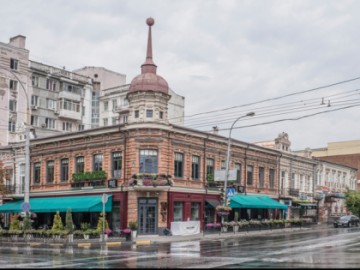
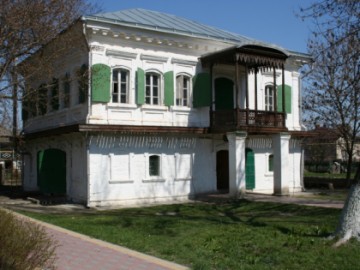
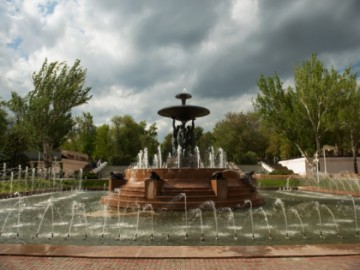
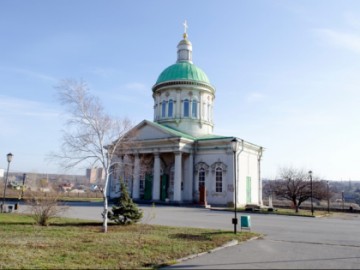
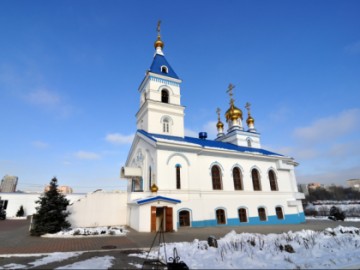
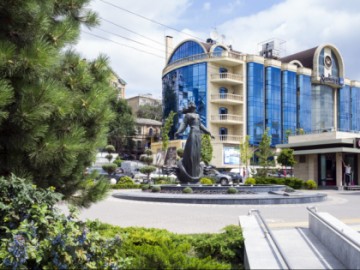
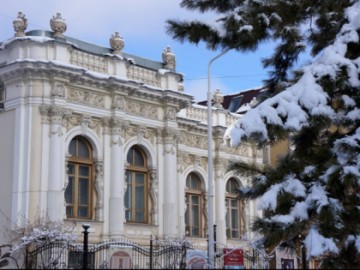
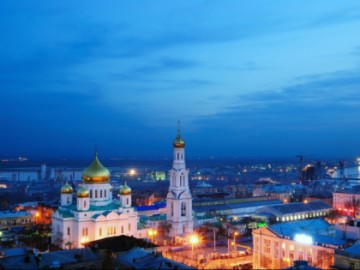


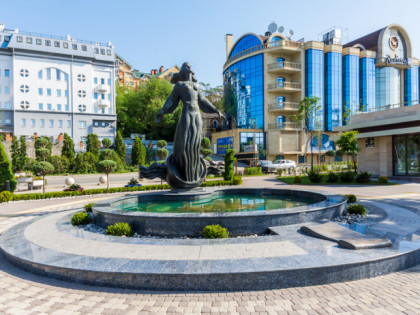




 Castles, Fortresses and Palaces
Castles, Fortresses and Palaces
 Museums and Exhibitions
Museums and Exhibitions
 Parks and recreation
Parks and recreation
 Other places
Other places
 Architectural Monuments
Architectural Monuments
 Temples and places of worship
Temples and places of worship
